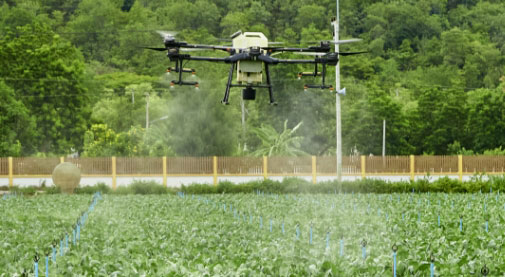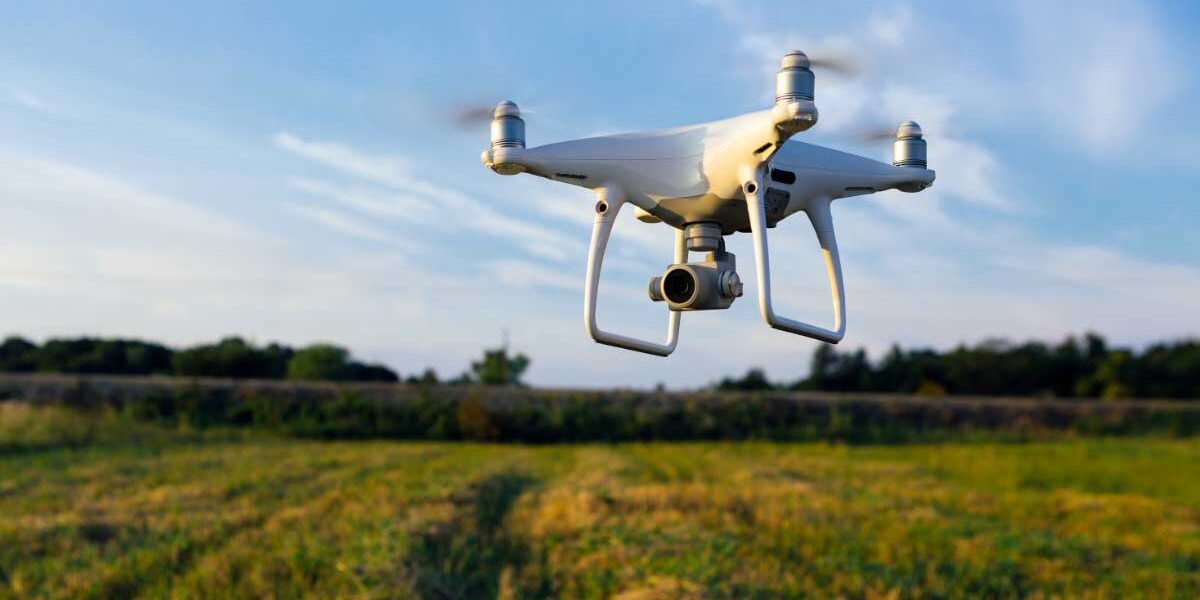As per Statista, “the market size for drones in smart agriculture will increase from approximately 1.2 billion U.S. dollars in 2019 to 4.8 billion U.S. dollars by 2024”.
From scouting to security, drone use will become more everywhere on large and small-scale farms in the coming years. The data collected by drones on farms are usually utilized to inform agronomic decisions better and is usually referred to as ‘precision agriculture.
Already drones have become a vital part of large-scale precision farming operations in several areas. The information collected from drone recording tracks helps farmers prepare their planting and procedures to perform the best possible yields. Some reports show that using precision farming systems can improve yields by as much as 5%, a sizable jump in an industry with usually thin profit margins.
This article will take a look at the main advantage of using drones in agriculture and the most striking use cases. Read on to learn more!
Why adopt agriculture drones?
So, what is the use of drones in the agriculture sector?
The explanation to this question boils down to enhancing overall productivity, but it’s about more than just drones. While drones have become a vital part of smart farming, hereby, they assist the farmers and growers in managing various challenges and get several benefits.
Many of these advantages derive from reducing any guesswork and eliminating the possibility. The progress of farming usually depends on many factors; farmers can’t check weather and soil conditions, temperature, precipitation, etc. The way to productivity lies in their capacity to adjust, which is influenced largely by the availability of useful, almost real-time info.
Here comes the picture of the use of drone technology. With having access to a broad pool of data, farmers can improve crop yields, save time, reduce costs and act with exceptional accuracy and precision.
We know that today’s world is fast-moving: variations, remodelings, and transmutations happen in just a blink of an eye. Evolution is important, and given the expanding population and the global development of weather conditions, farmers will be expected to use new-generation technologies to address developing challenges.
How do drones work?

To understand the drone working procedure in agriculture, let’s briefly look at this drone technology.
Basically, the drone system includes navigation, propulsion system, cameras, sensors, GPS, programmable controllers, and devices for automated flights.
For agriculture, UAV drones technology is developed in such a way that allows them to capture more precise information compared to satellites and airplanes are capable of collecting. Drone-based agritech software prepares the gathered data and gives it in an easy-to-read format.
Considering everything, the data collection method in the state of agriculture drones covers four logical levels:
-
Showing flight specification:
Drafting and judging the inspection field and uploading GPS info into the drone navigation system.
-
Autonomous flights:
A UAV drone sends out a flight pattern per the pre-decided specification and gathers the needed information.
-
Data upload:
The drone offers the data it has taken for processing and review.
-
Information output:
Once the data has been processed, it will be sent to farmers in a readable form. The report included complete data information, which helps for better farming management decisions.
After the data has been processed, it is sent to farmers in a readable form. The report contains insightful info which accounts for better farm management decisions.
Drone best methods in agriculture
The use of Drone in the agriculture sector is gaining force because of their ability to give the most up-to-date info quickly and efficiently. The development of Drone Agriculture Services and its affordability quality increases the usage of drones. Now let’s dive into how drones can be used for agriculture:
Measuring soil condition
Smart farming is data-driven, allowing farmers to make informed decisions to increase crop yields. It evaluates crop health, tracks crops, grows crops, sprays crops, and conducts field research. Furnished with smart agriculture sensors, thermal or multispectral sensors detect areas that involve irrigation adjustments. This helps to make it faster and more precise.
Planting future crops
For planting, the soil gets prepared, and drone technology shoots seeds inside using conventional planting methodology. Using drones for planting seeds is almost novel, yet, some businesses are testing this procedure.
These types of Drone Agriculture Services help in crop planting. UAVs can also sprinkle water, fertilizers, herbicides, decreasing expenses, manual labor, and time spent on these methods.
Combating infections and pests
Agriculture drones guide farmers on soil conditions using thermal, multispectral, and hyperspectral technology; they can also identify green areas caused by weeds, infections, and pests. Based on this data, farmers can choose the specific amounts of drugs required to fight infestations, reduce expenses, and yield better field health.
Agriculture spraying
Drones also use smart farms for agriculture spraying, which aids in restricting human contact with fertilizers, pesticides, and other toxic substances. Drones can manage this task quicker and more efficiently than vehicles and aircraft; they are also a great option for farms that still use manual operation.
Drones are also valuable when it comes to finding treatment. They can identify infected fields with sensors and cameras and operate on them while keeping the whole part of the field intact. This does not only save time but improves security but also assists decrease expenses.
Crop surveillance
Agricultural areas control large areas, and it’s usually nearly difficult to determine the general nature of crops.
Farmers can stay updated on the plants’ health in a precise area and show which field areas need care using drones for agriculture mapping.
To evaluate the state of crops, drones examine the field with infrared cameras and define light absorption times. Farmers can take steps to enhance the state of plants in any location as per accurate and real-time info.
Final thoughts
Agricultural drone technology has the potential to change advanced farming in many ways. To get full advantage, farmers have to go through a rigorous preparation method from evaluating business aims to choosing their hardware stack and drone software features.
In a nutshell, agricultural drone technology development is a complicated responsibility that will require Drone Agriculture Services and reliable solutions providers.
Got a business approach on how you can apply drones to increase your farm productivity? Get a free consultation from Teksun experts now to bring your project to success!



